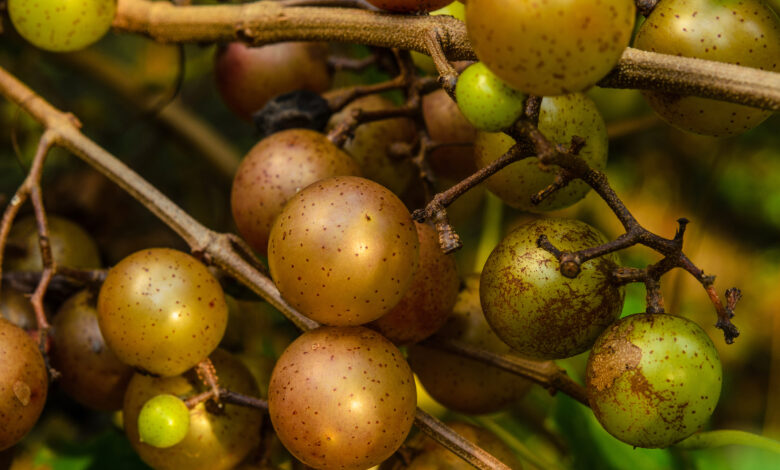
Do you find yourself unconsciously drooling for Twin Snakes or Starmix? Are you head over heels for a handful of Sour Patch watermelons? Is there a non-stop conveyor belt of tart treats headed down your throat? There is another way. I want to open a muscadine clinic for all the Haribo loyalists in the world. As summer approaches, nature’s gummy candy can fill this void.
Muscadine is a grape, but not the kind found in fruit salads and Ziploc baggies. They are pulpy, easily chewed in the teeth, popped into the mouth and eaten whole. Instead, the muscadine is an impressive shell that forces the eater to pay attention to its structure. Its skin may be light green with a purple blush, or wine-dark purple with a pink blush; It may have a dusty metallic sheen. It may be rough and mottled on the surface, slightly leathery, and strangely tight. If that doesn’t seem like a pleasant piece of fruit, that’s okay – you won’t actually eat that part. Think of muscadines as an individually packaged treat.
To eat a muscadine, place it in your mouth, prick the skin and press it gently between your index finger and thumb. The meat will be completely intact, with gusto, as if taking off an uncomfortable dress. I can’t overstate how sticky those insides are. They’re translucent and hold their shape, with a satisfyingly dense matrix of goo that can withstand some chewing. If flubber were edible, these might be the tasting notes.
Muscadins yield a juice that is tart and floral, with a good spoonful of sugar and sometimes a vinous foul smell. It’s a strangely circular idea, but this flavor of muscadine sounds like the goal that artificial grape flavors were aimed for, a flavor that hardly resembles the one-note, sugar-bomb table grapes that come with it. We find today. This is what they took away from us!
A beloved variety of muscadine is scuppernong, a word I love to read and say, which feels like the spiritually accurate term for this silly snack. It’s strange to realize that this jelly-like and goofy thing was hiding inside that intimidating shell all along.
In addition to the muscadine’s hard exterior, there are some large seeds inside that need to be sorted out, but they are easily separated from the pulp. This makes the muscadine more complicated to eat than a standard grape, but it will appeal to process-oriented snackers who love peeling sunflower seeds. It gives idle teeth and minds something to focus on. With snacks like this, I feel like my rate of consumption goes down, but my total ability to consume increases indefinitely, because all of my attention is focused on my dogs’ exact spots. Pat off the skin, remove the pulp, remove the seeds. Knock, knock, pick up, knock, knock, pick up. I have cut their boxes in a silent, happy mood.
Muscadines are native to and commonly associated with the South. People in Georgia are used to eating them in the wild, putting them in pies and wine, but now they are grown from Florida to Delaware. In the New York metropolitan area, I have to settle for buying them at the grocery store instead of plucking them from the vine. On my last visit, the store’s usual muscadine spot was empty, and though the boring grapes nearby tried to tempt me, I declined their call. There was still one box left in my fridge, which I carefully took out. Now there’s actually one muscadine left.
around these parts we Take seasonal fruits seriouslyAnd I’m already mourning its absence from my snack rotation. The sun may still be warming my arms as I write this, but it’s October, and next summer’s harvest feels so far away. In the meantime, I may have to settle for a bag of gummies.
